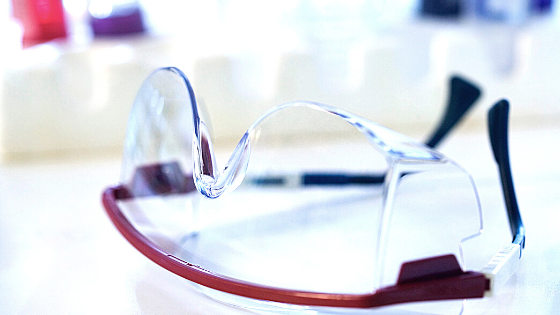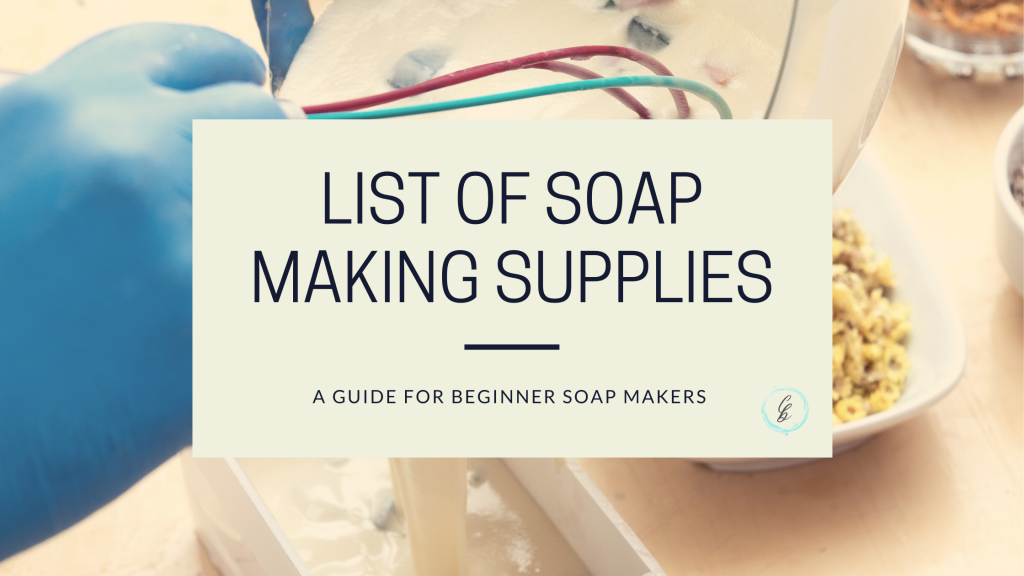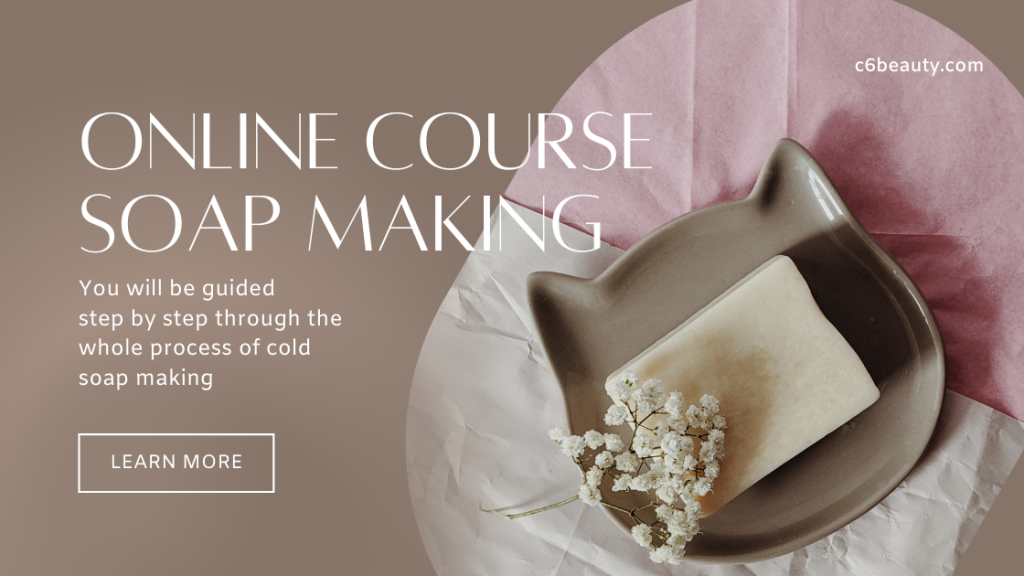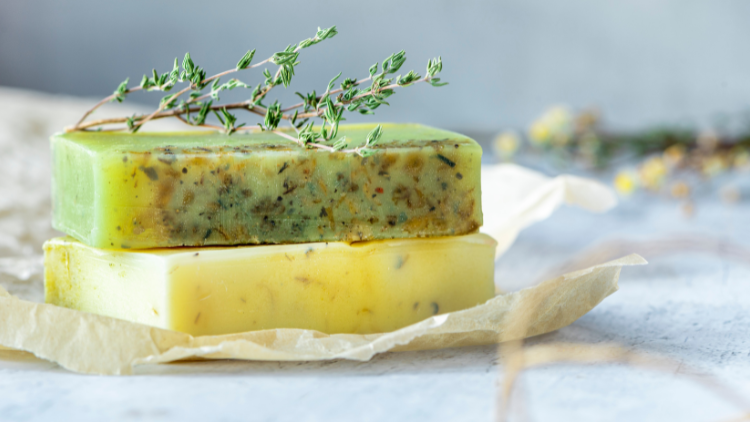Making soap at home is one of my favorite hobbies. The idea of being able to make a soap with vegetable oils and customize it with colors and scents, amuses and stimulates me. In addition, it also makes me more eco-sustainable, not having to buy soap with useless packaging that sooner or later will have to be thrown away. In this post, I decided to list all the tools you need to have if you want to make soap at home with the cold method. This post is an excerpt from Soap making 101 with the cold method, have a look at it by clicking here. You will find all the information to master this hobby.
Learn everything about soap making with my comprehensive course! Everything from ingredients, to lye discount, superfat, and much more!
Disclosure: Some of the links in this post are affiliate links. By clicking through them and making a purchase, I may receive a small commission WITHOUT any additional cost to you.
Gabi
List of soap making supplies
As I described in a previous post of mine, soap is the result of a chemical reaction. By mixing precise amounts of oil and caustic soda you get soap and glycerine that over time take on a solid and robust consistency. Let’s start the list of soap-making suppliers with ingredients.

How to make soap: Ingredients
We’re gonna need:
- Oils and butter (Amazon, DragonspiceDE )
- Caustic soda (Amazon, DragonspiceDe)
- Distilled water (find it here)
They are all easily available at reasonable prices, both online and in stores.
Soap Making Supplies: Safety First

The cold soap production method involves the use of caustic soda. It is an ingredient that requires appropriate safety measures because it is highly corrosive both in solution and solid-state. In addition, during the preparation of the caustic solution fumes can be generated which, if inhaled, would cause serious damage to the respiratory system.
The preparation of caustic soda is an important step. It can also be dangerous, if not done with the right precautions. I suggest you to have a look at my mini course entirely dedicated to this aspect. In my MINI COURSE, you will find the main recommendations and advices to help you properly handle lye. Also, a simple tutorial to show you in practice how to make a simple bar of soap. You can find it here.
In order to work safely, it is absolutely necessary to be equipped with:
These are essential and cannot be missing from the tools to be used for soap production. I also recommend working with long-sleeved trousers and T-shirts to prevent splashes from accidentally ending up on the skin.
Soap Making Supplies: Tools

Now that we have the ingredients and all the equipment that will allow us to work safely, let’s see what tools are needed to make our soap.
Containers and spoons
Let’s start with the containers where we’ll weigh the oils, butter and prepare the caustic soda solution. The containers we’ll need will be of two types:
- Plastic Container (PP)(polypropylene plastic) to prepare the caustic soda solution. I normally weigh the caustic soda in a pyrex glass that I only use for this purpose. I then pour the lye into a second PP container containing the water.
- Stainless steel, pyrex glass (find it here), or PP (polypropylene plastic) containers to heat oils and greases in a water bath. This should be large enough to hold the final soap.
To mix the caustic soda solution you will need either a wooden spoon or a glass stirring rod. Some soap manufacturers also use stainless steel spoons. I have never tried it before because I am currently satisfied with my old wooden spoon. To mix the soap once produced, I love to use the silicone spatula that takes each portion of soap, making the transfer into the mold perfect and safe.
Soap making supplies: equipment

To prepare the soap at home we will need some essential tools:
Digital scale
A digital scale is a must for soap production. I prefer it to analogs because it can measure more precisely and accurately without the risk of making mistakes that could affect the success of the product. I only use one for DIY, here in the picture!
Immersion blender (Stick blender)
In order to mix the fats with the caustic soda, I strongly recommend that you use an immersion blender. Mixing the two phases with a whip or spoon will take too much time and effort. We’ll be stirring them for minutes or even hours until the right consistency is reached. To avoid all this, an immersion blender will help us save time and get a quality soap. As with the digital scale, I purchased an immersion blender exclusively for soap production. It is recommended to keep utensils that have come into contact with caustic soda well separated from the kitchen or other DIY activities. The immersion blender I use is not very expensive and does its job perfectly.
Thermometer
The thermometer is an instrument that I did not buy immediately thinking I did not need it. Actually, I was wrong! Mixing oils and caustic soda at very different temperatures can affect the final result. For example, from my experience I understood that adding the caustic soda solution when its temperature is still very high triggers the saponification reaction too quickly, compromising the structure and the next stage of customization with dyes. On the market there are several but I recommend the infrared one that is really easy to use.
Molds
Once we have created our soap, we will just have to pour it into the molds and let it cure for a few weeks. There are many molds on the market, I started using silicone molds that are easy to use if you are a beginner. I also used other plastic molds but extracting the soap was a challenge. If you want to raise the bar and prepare larger amounts of soap by trying different decorative techniques, you can opt for the silicone mold with the wooden box. This option will allow you to make your soaps and cut them perfectly thanks to the small knife provided.
Don’t waste more time looking for information! Learn everything about soap making in just one course! Everything you need to know to start making your handmade soap!
Are you not ready for a course? Don’t worry! Start with my FREE guide!
Grab it now!!

Conclusion
With this list, you just have to start making your own soap and have fun with this fantastic hobby! I love it!
If you like my content, help me with a small donation. With your support, I would like to buy new ingredients and create original healthy beauty products! Thank you 🙂
Gabi




